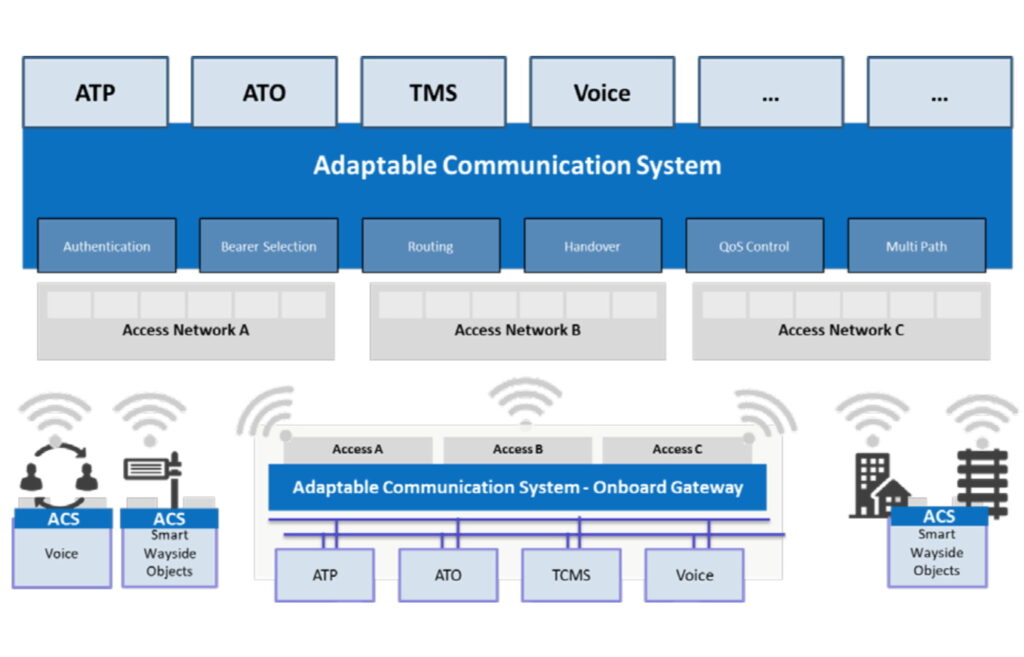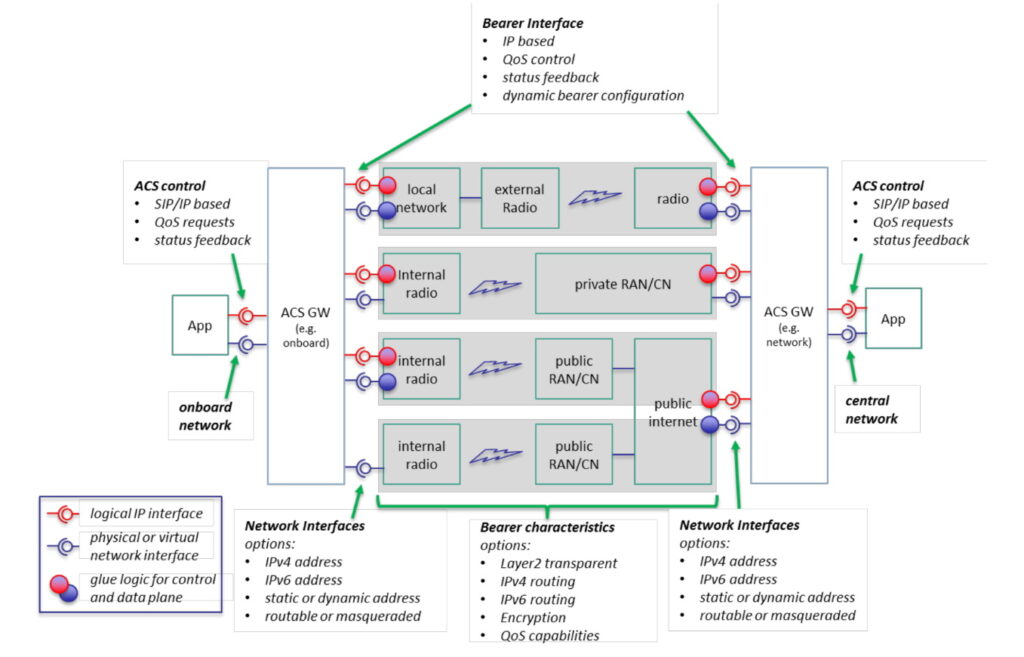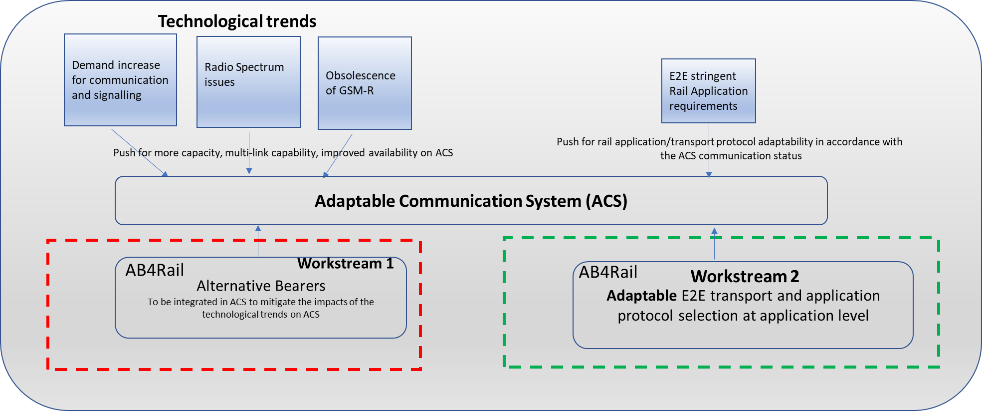Background
The AB4RAIL project is centered on the study and the assessment of the Adaptable Communication System (ACS) in terms of Alternative Bearers (left) and Communication Protocols (right) for railways applications.


AB4RAIL contribution
The AB4Rail project is organized into two main workstreams:

Alternative bearers (workstream 1)
- To identify, assess, analyse and describe alternative communication bearers (ABs) for the rail environment, from a technology perspective, in addition and beyond established radio technologies such as UMTS/HSPA, LTE, LTE-A, WiFi/802.11, geostationary satellites;
- To study Optics (Visible Light Communication (VLC), Free Space Optics (FSO)), Power Line Communications (PLC), Internet of Things (IoT) (Short Range, i.e. Bluetooth Low Energy (BLE), Zigbee, Ultra-wideband (UWB), IoT (Long Range, i.e. Low Power Wide Area Network (LPWAN) e.g. LoRa, NB-IoT), High Altitude Platform System (HAPS), Update technologies (Novel Sat LEO constellations), Future technologies (Quantum communications, THz communications) as alternative communication bearers suitable for the rail infrastructure and the equipment alongside the railway tracks;
- To select the most promising alternative bearers technologies to be integrated into the ACS by providing a recommendation or classification of ABs related to certain railway environments in terms of technology and business case development;
- To compare the expected communication characteristics of each AB with well-established wireless technologies of Traditional Bearers (TBs);
- To use its emulators/simulators, laboratories and facilities for on field test to verify the performance.
Communication protocols (workstream 2)
- To identify the appropriate transport protocol for ensuring communication characteristics and capabilities during application development;
- To study the interworking between Internet Protocol v4 (IPv4) and Internet Protocol v6 (IPv6);
- To analyse options for transport layer and the application layer protocols for specific rail applications;
- To analyse the security of transport and application layer using secure version of application protocols;
- To conduct IP-based emulation/simulation to support the protocol investigation activities.
